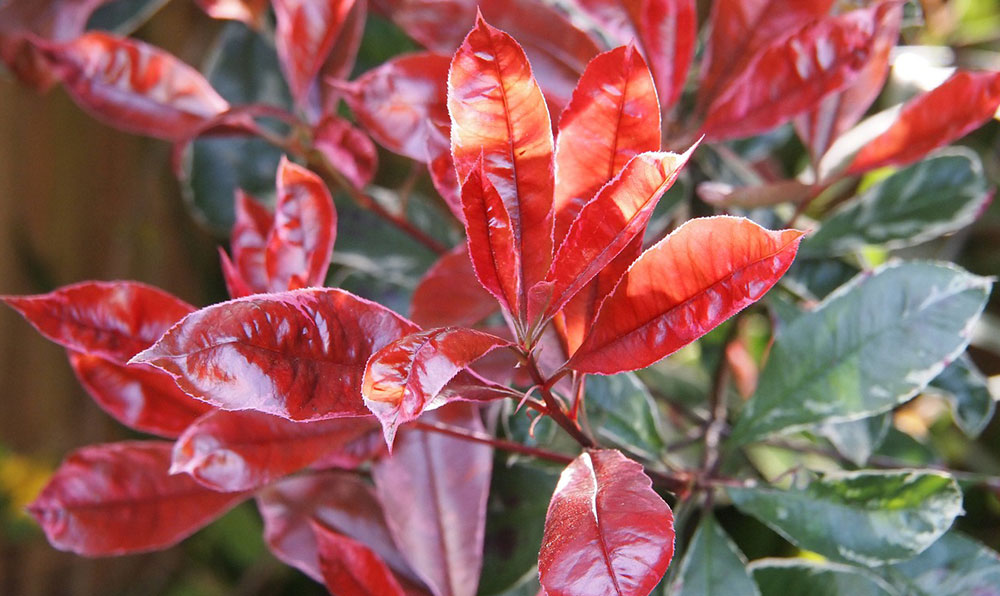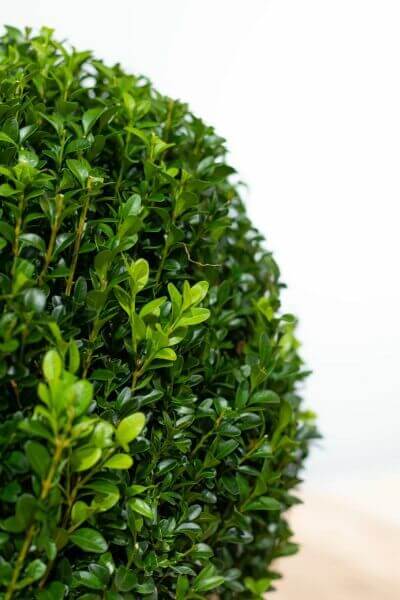Top Hedge Plants For Your Garden
Top Hedge Plants For Your Garden
Blog Article
Hedge Plants For Innovative Gardens
Boost your garden's appeal with lavish hedge varieties such as Yew (Taxus), Thuja, Laurel, Photinia, and Bamboo, celebrated for their structural integrity and ecological benefits.
Yew and Thuja supply evergreen protection and winter durability, while Laurel offers rapid development and broad, fragrant leaves.
Photinia adds seasonal charm with its vibrant red foliage, and Bamboo lends a low-maintenance, tranquil ambiance.
These hedges improve air quality, minimize noise, and develop tranquil, personal areas.
Appropriate planting, spacing, and upkeep ensure vigorous development and ecological consistency.
Explore how these lush varieties can elevate your garden's beauty and wellness.
Secret Takeaways
Change Your Garden With Lush Hedge Ranges
- Select Yew for its thick, evergreen development and unrivaled durability.
- Opt for Laurel for its quick growth and broad leaves, guaranteeing quick privacy.
- Choose Photinia for its dynamic seasonal foliage, which turns a striking dark red.
- Use Bamboo for a low-maintenance, winter-hardy hedge with visual appeal.
- Area plants 2-3 per meter and prune routinely for ideal development and health.
Popular Hedge Plants
When changing a garden with lush hedge varieties, it's essential to think about popular hedge plants such as Yew, Thuja, Laurel, and Photinia due to their distinct attributes and benefits.
Yew (Taxus) is highly respected for its durability and dense, green growth, making it a prime option for enduring landscapes.
Thuja is kept in mind for its evergreen foliage and robust winter season strength.
Photinia adds seasonal vibrancy with red leaves that darken gradually, developing vibrant visual appeal.
Laurel offers rapid growth and fragrant, broad leaves, perfect for quick privacy.
Additionally, Bamboo is an exceptional option for ambiance, providing a low-maintenance, winter-hardy choice that boosts the garden's aesthetic with its elegant, swaying canes.
These choices accommodate a range of horticultural needs and preferences.
Benefits of Garden Hedges
Garden hedges use a wide variety of benefits, making them an important addition to any landscape. These natural barriers are cost-effective to execute and supply significant wind protection, improving air flow and contributing to noise reduction. The thick foliage of hedges like Thuja and Beech makes sure privacy by blocking exposure, developing a remote and serene environment.
Hedges also play a crucial role in microclimate policy, supplying a steady environment that promotes plant development and reduces temperature fluctuations. Their complex leaf structures filter toxins, enhancing air quality and adding to a much healthier garden community.
Furthermore, hedges master noise reduction, taking in and deflecting acoustic waves to lower ambient sound levels. This dual functionality of offering both visual and acoustic personal privacy boosts the general tranquility and aesthetic appeal of any garden.
Planting and Maintenance Tips
For an effective hedge, careful preparation of the planting location is vital. Ensure the soil has appropriate pH and drain to support strong root development.
Space the plants appropriately for the selected species. Water the hedge frequently throughout its initial growth phase, changing as needed with seasonal changes.
Carry out a systematic insect control and illness prevention method, utilizing organic or chemical treatments when required. Frequently examine for aphids, mites, and fungal infections.
Apply mulch to retain wetness and reduce weeds. Seasonal pruning promotes dense development and air flow, vital for plant health.
Following these standards will assist you cultivate a dynamic, well-kept hedge that improves the beauty of your garden.
Spacing and Trimming Guidelines
Spacing and Trimming Standards
Appropriate spacing and cutting are vital for cultivating healthy, visually appealing hedges. Appropriate spacing guarantees each plant gets sufficient nutrients, light, and airflow.
Follow these guidelines for optimal hedge upkeep:
- Spacing: Position hedge plants 2-3 plants per meter to motivate robust growth.
- Pruning Strategies: Routine pruning is important for preserving wanted hedge height and shape. Trim new growth in summer season and cut down older wood during winter.
- Seasonal Care: Adjust trimming techniques and schedules according to seasonal requirements to make sure plant health.
- Hedge Height: Routinely display and trim to keep the wanted hedge height and attain uniform visual appeals.
Sticking to these actions will ensure your hedge thrives, enhancing both the appeal and functionality of your garden.
Choosing the Right Hedge
Selecting the Right Hedge
Choosing the appropriate hedge includes evaluating elements such as fully grown height, foliage density, and environmental resilience. Effective hedge plant selection requires understanding each types' growth attributes and site-specific adaptability.
For instance, Yew (Taxus) provides excellent durability and thick growth, while Thuja is notable for its winter season resilience. In addition, considering maintenance requirements is vital; fast-growing species like Laurel or Privet need regular cutting, whereas low-maintenance choices like Bamboo or Ivy may be more suitable for those looking for minimal maintenance.
Environmental elements such as soil type, light schedule, and moisture conditions need to also direct the selection process. This mindful approach guarantees the picked hedges will flourish, offering both aesthetic and functional benefits to the garden landscape.
Delivery and Planting Advice
To guarantee your hedge plants grow, they ought to be provided by specialized carriers and planted promptly upon arrival.
Follow these vital actions for successful planting:
- Soil Preparation: Enrich the soil with natural matter to enhance drain and nutrient content.
- Planting Depth: Create a trench two times the width and equal to the depth of the root ball.
- Watering Methods: Water completely after planting, keeping the soil regularly wet but not saturated.
- Mulching: Apply a layer of mulch to keep wetness and reduce weeds.
Consumer Assistance and Service
Given the crucial role of timely support in horticultural pursuits, our client support team is offered 6 days a week through telephone, e-mail, and social networks to use skilled suggestions and promptly resolve any issues. Their devotion to fast action times makes sure consumer fulfillment by solving questions connected to plant health, optimum planting approaches, and maintenance schedules.

-------------------
Within 24 hours
This thorough support group, reinforced by an outstanding 9.3/ 10 client score, highlights our dedication to improving the gardening experience for every single customer.
Frequently Asked Questions
How Long Does It Take for Hedge Plants to Establish?
Hedge plants generally require one to three years to become totally developed, with the specific period differing by species and growing conditions.
Efficient care during this crucial period is hedging plants essential for robust development. Consistent watering, watchful weed control, and suitable fertilizer application are pivotal in promoting strong root development.
For instance, fast-growing types like Laurel might establish quicker, while slower-growing ranges such as Yew might take longer. Persistent maintenance speeds up the facility process, resulting in healthy and thick hedges.
What Are the Finest Hedge Plants for Privacy?
The question of the finest hedge plants for personal privacy involves evaluating evergreen and deciduous alternatives.
Evergreen hedges like Thuja, Laurel, and Cypress supply year-round coverage, ensuring constant personal privacy.
In contrast, deciduous hedges such as Beech offer seasonal personal privacy, shedding leaves in chillier months.
Key upkeep ideas for privacy hedges consist of regular trimming, fertilizing in spring, and appropriate spacing-- generally 2 to 3 plants per meter.
In addition, constant watering and persistent weed removal are vital for promoting healthy, dense development.
Can Hedge Plants Bring In Wildlife to My Garden?
Yes, hedge plants can attract wildlife to your garden by offering essential benefits like shelter, food, and nesting sites, consequently enhancing regional biodiversity. For example, yew, holly, and laurel are exceptional for bring in birds, while ivy supports a range of bugs.
Nevertheless, it is very important to keep in mind that there are some disadvantages, such as increased upkeep to manage insects and routine upkeep. Thoroughly selecting and preserving hedge ranges can help balance these advantages and drawbacks, ultimately promoting a lively and sustainable community in your garden.
Exist Any Flowering Hedge Plants Available?
Yes, there are flowering hedge plants offered that can boost the charm of your garden.
For example, Elaeagnus, likewise called Olive Willow, produces aromatic white flowers in the fall, adding a touch of beauty.
Photinia, another popular option, showcases lively red leaves that mature into a rich green, producing a vibrant visual result throughout the seasons.
To make sure these plants thrive, it's necessary to practice appropriate pruning strategies and seasonal upkeep, such as cutting brand-new growth in the summer and cutting back in the winter.
These steps will help maintain the health and visual appeal of your blooming hedges.
How Do I Avoid Bugs in My Hedge Plants?
To avoid bugs in hedge plants, use natural bug control approaches and maintain proper hedge care. Introduce beneficial insects like ladybugs, which prey on harmful pests, to create a balanced environment.
Frequently check your hedges for signs of problem and promptly get rid of any affected parts to prevent the spread. Guarantee the health of your hedges by applying balanced fertilizers and providing appropriate water.
Make use of mulching to keep soil moisture and proper spacing to reduce plant tension and promote robust growth. These practices collectively help in reducing pest concerns and keeping a healthy hedge.
Conclusion
In essence, selecting the best hedge varieties such as Yew, Thuja, and Laurel can change any garden into a relaxing haven. These plants supply year-round plant, enhance visual appeal, and deal practical advantages like noise reduction and wind defense.
Appropriate planting techniques, precise spacing, consistent watering, and seasonal cutting are important for optimal development.
Trustworthy delivery services and skilled client support guarantee a seamless experience from purchase to planting, making it easier than ever to elevate your outside space.
Garden hedges provide a wide range of advantages, making them a valuable addition to any landscape. These natural barriers are cost-efficient to execute and supply considerable wind defense, enhancing air blood circulation and contributing to noise decrease. The dense foliage of hedges like Thuja and Beech guarantees personal privacy by obstructing presence, creating a peaceful and remote environment.

Pruning Techniques: Routine pruning is vital for preserving desired hedge height and shape. Cut new development in summertime and cut back older wood during winter season.
Report this page